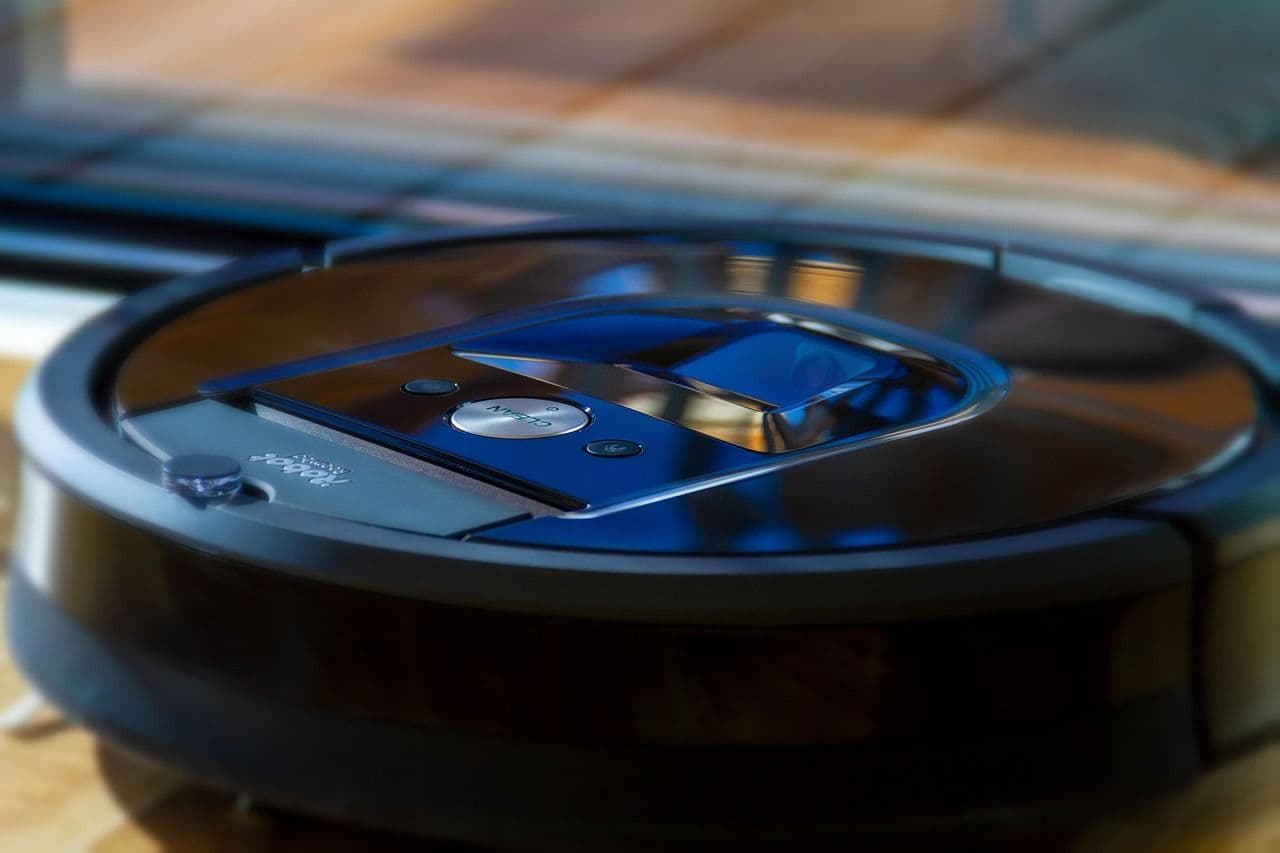Best Personal Robots In 2025
Top personal robots of 2025 for home and office use.
Eddie
May 9, 2025

In 2025, personal robots are reshaping the way we live and work, evolving from luxuries to everyday essentials. This is driven by advanced robotics integrated into smart home systems, with over 30% of Americans already owning some form of smart appliance. With AI advancements, these robots can take on a myriad of tasks, making life more convenient and efficient. Whether it's maintaining a lawn with precision or handling mundane household chores, personal robots are designed to save us time and effort, allowing us to focus on more meaningful activities. As we address the needs of an aging population and the demands of modern life, the presence of personal robots in homes and offices is expected to grow. Creating smarter, more connected environments.
The Rise of Home Robots

Integration with Smart Home Systems
As home robots continue to evolve, their integration with smart home systems has been seamless. These intelligent machines are now designed to connect with various devices, creating a fully interconnected home environment. AI-powered robots can now control lights, thermostats, and security systems, responding to voice commands or programmable schedules. Popular examples include smart hubs like the Amazon Echo (US$129.99), which orchestrate these operations through intuitive voice interactions, making it easier than ever to manage home functions.
Moreover, by combining AI and IoT technology, these robots can perform tasks autonomously, reducing the need for manual input. Their ability to work with systems like Google Home or Amazon Alexa allows for synchronized tasks, such as starting a vacuum while lights dim or setting the thermostat for energy savings when no one is at home, thus enhancing energy efficiency.
Addressing Daily Needs and Tasks
Modern personal robots are designed to handle repetitive or mundane tasks that often take up valuable time. For instance, robot vacuums and lawn mowers automatically clean floors and maintain outdoor spaces, respectively. These devices, equipped with features like smart navigation and scheduling, optimize cleaning routines with minimal human intervention.
Window cleaning robots are another excellent example, providing streak-free results on glass and other vertical surfaces with their advanced sensors and cleaning patterns. Similarly, cooking robots assist in meal prep, handling tasks such as chopping, blending, and cooking under guided recipes, effectively streamlining kitchen work.
This automation extends beyond just cleaning and cooking. Some robots serve as personal assistants, capable of setting reminders, playing music, or even making phone calls, thereby supporting users in managing their daily lives efficiently.
Benefits for Aging Populations
The aging population faces unique challenges that personal robots are well equipped to address. Social and companion robots have emerged as crucial tools in this context, providing assistance and companionship to elderly individuals. These robots can remind users to take medications, offer health monitoring, and deliver critical alerts in emergencies, thereby promoting independent living.
Health monitoring robots like ElliQ (US$249.99 enrollment / US$59.99 per month) are specifically designed for seniors, supporting their health needs while offering social interaction. Through sensors and AI, these robots perform vital sign checks and ensure users maintain a schedule for medications or exercises, lending peace of mind to both family members and caregivers.
Types of Personal Robots

Cleaning and Maintenance Robots
Cleaning and maintenance robots are among the most popular types of domestic robots. Robot vacuums and mops, such as the DEEBOT X8 PRO OMNI (US$1,099.99) manage floor care with advanced navigation systems and app-controlled features that optimize cleaning paths and avoid obstacles. These robots vacuum, mop and are equipped with self-cleaning mechanisms and powerful suction, making them versatile for various floor types.
Lawn care robots maintain gardens with precision, measuring cutting paths with technologies like LiDAR and RTK navigation for perfect edge finishes. They require minimal setup, and once programmed, they operate independently, ensuring a neatly trimmed lawn without the owner's intervention.
Security and Monitoring Robots
Security robots play a pivotal role in modern home safety, providing real-time surveillance and alerts. Equipped with cameras, sensors, and AI, these robots, like the Knightscope K5 (US$9.00 per hour in a MaaS model), monitor properties, detect unusual activities, and send immediate alerts. They can be integrated into existing security systems, providing a comprehensive defense strategy.
Smart monitoring robots also have applications beyond security. For instance, they can detect environmental hazards such as smoke or unusual noises, notify users, and prevent potential emergencies. This type of constant vigilance greatly enhances the overall safety of the home environment.
Social and Companion Robots
Social and companion robots are increasingly recognized for their ability to interact with humans on an emotional and cognitive level. Robots like ElliQ serve dual purposes - they offer care and companionship to the elderly and support children with learning and development. With sensitive AI algorithms, these robots engage users in conversations, play games, and respond to emotions, creating valuable interactions within the home.
They help foster social-emotional learning and provide therapeutic benefits in contexts such as autism therapy and dementia care. Through touch, sound, and visual recognition, they create a nurturing environment tailored to the needs of their human companions, effectively bridging technology and humanity.
Top Personal Robots for 2025

Advanced Home Cleaning Robots
Home cleaning robots have advanced significantly over the years, turning what was once a novelty into a necessity for many households. In 2025, these robots have not only become smarter but also more specialized:
- Robot Vacuums and Mops - The newest models, such as DEEBOT X8 PRO OMNI, come equipped with cutting-edge features like AIVI 3D 3.0 Omni-Approach Technology, offering superior navigation and obstacle avoidance. With their ability to recognize countless objects, these robots offer extensive floor coverage using panoramic dToF LiDAR sensors.
- Robot Window Cleaners - Innovations such as the WINBOT W2 PRO OMNI (US$499.99) simplify window cleaning, particularly for high-rise apartments. With features like WIN-SLAM 4.0 smart planning and anti-dropping protection, they ensure safety and a streak-free shine.
- Lawn Care Robots - For homeowners, advanced lawn mowers such as the GOAT O1000 RTK (US$899.99) provide precise edge-to-edge cutting using LiDAR-enhanced RTK navigation, which ensures accurate operation even in shaded areas.
AI-Powered Security Bots
Security remains a top concern for households and businesses alike, and AI-powered security robots have become indispensable in maintaining safety:
- Security Robots - Devices like the Knightscope K5 offer robust home protection with features like facial recognition, motion detection, and real-time alerts. They also monitor for potential hazards such as smoke or unusual noises, sending updates directly to your devices.
- Interactive Smart Home Hubs - Systems like Amazon Echo work as a central control for other smart security devices, allowing users to manage security cameras, lights, and alarms with simple voice commands.
Household Companion and Entertainment Robots
Companion robots enrich our lives by offering entertainment, assistance, and emotional support:
- Social and Companion Robots - These robots are equipped with AI to engage in conversations, play games, and assist with daily tasks. They can interpret facial expressions and emotions, making them ideal for supporting the elderly and improving social-emotional learning among children.
- Educational Robots - Robots like LEGO Mindstorms (US$1205.00) introduce children to coding and STEM via interactive play, promoting skill development through creative challenges.
- Robot Pet Sitters - For pet owners, these devices dispense food and keep pets entertained with interactive toys, ensuring that furry friends remain active and happy even when owners are away.
Choosing the Right Personal Robot for Your Needs

Assess Your Needs and Budget
Understanding your requirements is the first step. Identify tasks you need the most help with, whether it’s cleaning, security, or companionship. Budget is also crucial, as robots range in price from affordable to premium. Determine how much you're willing to spend for the convenience and efficiency that robots provide.
Start Small
If you’re new to personal robots, consider starting with a versatile device such as a robot vacuum cleaner that addresses common tasks like floor cleaning. This allows you to acclimatise to robotic technology without becoming overwhelmed by multiple devices.
Compatibility with Smart Home
Ensure any robots you select are compatible with your existing smart home ecosystem. This simplifies control through a single platform like Google Home or Amazon Alexa and allows for seamless integration of tasks and routines.
Research Brands and Models
Before purchasing, explore different brands and models. Read reviews and customer feedback to evaluate performance, durability, and features like battery life and ease of maintenance. Starting with well-reviewed options can provide a reliable introduction to robotic technology.
Customer Support and Warranty
Finally, consider the support offered by the manufacturer. A solid warranty and accessible customer service are vital, especially if technical issues arise. This ensures peace of mind and longevity in your investment.
By focusing on these considerations, you'll be well-equipped to choose personal robots that enhance convenience, efficiency, and enjoyment in your daily routine. Whether at home or in the office, these robots promise to revolutionize how we live and work in 2025.


